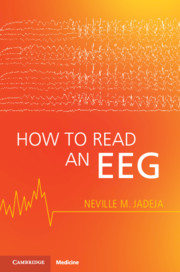Book contents
- How to Read an EEG
- How to Read an EEG
- Copyright page
- Dedication
- Contents
- Figure Contributions
- Foreword
- Preface
- How to Read This Book
- Part I Basics
- Chapter 1 Introduction
- Chapter 2 Polarity
- Chapter 3 Montages
- Chapter 4 Localization
- Chapter 5 Active Reference
- Chapter 6 Frequencies and Rhythms
- Chapter 7 Maturation
- Chapter 8 Normal Adult EEG
- Part II Interpretation
- Part III Specific Conditions
- Appendix How to Write a Report
- Index
- References
Chapter 4 - Localization
from Part I - Basics
Published online by Cambridge University Press: 24 June 2021
- How to Read an EEG
- How to Read an EEG
- Copyright page
- Dedication
- Contents
- Figure Contributions
- Foreword
- Preface
- How to Read This Book
- Part I Basics
- Chapter 1 Introduction
- Chapter 2 Polarity
- Chapter 3 Montages
- Chapter 4 Localization
- Chapter 5 Active Reference
- Chapter 6 Frequencies and Rhythms
- Chapter 7 Maturation
- Chapter 8 Normal Adult EEG
- Part II Interpretation
- Part III Specific Conditions
- Appendix How to Write a Report
- Index
- References
Summary
Localization is the art of locating the site of maximal potential, presumably the origin of a waveform of interest. The EEG is relatively blind to certain cortical regions such as the sulcal depths, inferior surfaces of the brain, and infoldings such as the insula. Localization depends on the montage in use and the rule of polarity. Phase reversal is the key to localization with a bipolar montage. Maximal amplitude is the key to localization with a referential montage. Phase reversals are usually but not always adjacent. Nonadjacent phase reversals are separated by an isopotential channel (near flat line). Foci located at the end of a chain in a bipolar montage don’t show a phase reversal. An apparent phase reversal on a referential montage may indicate a horizontal dipole or an active reference.
- Type
- Chapter
- Information
- How to Read an EEG , pp. 23 - 28Publisher: Cambridge University PressPrint publication year: 2021

